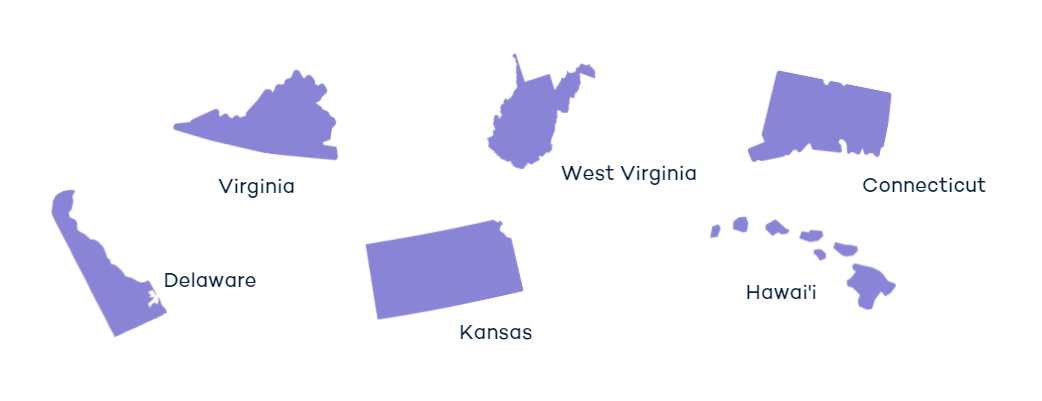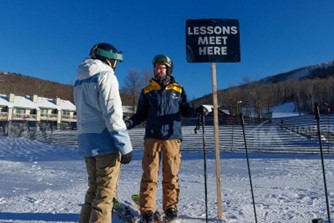Governors have developed ambitious initiatives to improve the lives of children and families.
by Isabella Cuneo
Governing a state is a bit like flying an airplane: You must know how things look from 30,000 feet. The most dynamic state leaders embrace holistic approaches to problem-solving, and a Governor’s ability to see the entire landscape across policy issues and nuanced topics makes them adept pilots of the state. While each family endures its own specific challenges, child and family well-being is indeed a 30,000-foot issue. It requires consideration of the entire ecosystem of factors that affect the health, safety, stability and community ties of these foundational units. The National Governors Association is actively supporting states in developing innovative and targeted solutions to address whole-family approaches that engage the interplay of multiple layers and systems. From deep dives into data on adoption, poverty and resource needs, to the creation of user-friendly apps for community resources, to commissioning formal wrap-around service hubs for families, Governors have heeded the call in pursuing comprehensive approaches to promoting child and family well-being. Below we take a look at a sample of states’ unique goals and approaches to supporting children and families.
Connecticut
Connecticut prioritized improving and strengthening the state’s approach to delivering services to children and families by focusing on improving adoption permanency rates, particularly for children of color, developing strategies to close virtual education achievement gaps, building child welfare workforce capacity, and identifying opportunities to support families in navigating services and supports. Over the past year, Connecticut has enacted multiple initiatives including a Prevention Services pilot unit to deliver upstream services to families, and Transformational Zones that address adoption permanency rates by identifying barriers to adoption to further implement and advance their child and family well-being goals.
“The bottom line is that we have an unwavering commitment to creating and sustaining ecosystems where children are safe, healthy, learning and thriving.”
Governor Ned Lamont
Delaware
Delaware focused on remodeling child abuse and neglect reporting by expanding virtual reporting platforms for families and mandatory reporters in conjunction with local education systems with child protective services to better identify family needs. By identifying alternatives to reporting hotlines, developing a resource app for children and parents to connect to services, and designing plans to implement social service kiosks to be placed in community settings, Delaware has focused on reaching families through new access points at schools, which are critical social capital junctures.
“Our challenge is to determine whether the programs and services we offer are effective in moving families out of poverty, improving our system of education and creating opportunities for all Delaware families to succeed. That requires all of us – government agencies, nonprofits and private business – to work together.”
Governor John Carney
Hawai‘i
Hawai‘i embraced a multigenerational approach to reducing poverty by identifying opportunities to strengthen community support for services through the formalization of Family Resource Centers. Granting a legislative foundation for these resource centers and establishing a cohesive implementation plan for their expansion, Hawai‘i has validated a vehicle to prioritize and incorporate perspectives of youth and those with lived experiences into the delivery of supports and services that are available to families. Working hand in hand with local school systems and community-based organizations to wrap around families, Hawai‘i has prioritized rapidly connecting families with resources.
“I see Hawai‘i as a place and a community that cherishes our children, celebrates our diversity, and supports a better life for the next generation.”
Governor David Ige
Kansas
Kansas concentrated on reimagining service delivery and connecting families to resources and supports before formal allegations of abuse and neglect are reported. Shifting the traditional child abuse and neglect reporting paradigms from mandated reporters to mandated supporters, the Kansas team worked in tandem with local school systems and superintendents and identified school resource officers to help connect families to meaningful supports early. Kansas plans to take this work to the next level through a collective design that can be replicated and mobilized throughout the state.
“The pandemic has affected all Kansans – including our most vulnerable children and families. I’m pleased to join this distinguished program so Kansas can become a leading state in building a stronger safety net and ensuring all families have the support and opportunities they need to thrive.”
Governor Laura Kelly
Virginia
The Virginia team turned its attention to barriers to service delivery as the main preventive factor in combatting child abuse and neglect. Its strategy is an integrated system of care that leverages services and supports to increase family independence and well-being by targeting resources aimed at addressing poverty-adjacent factors. Using data to design metrics to analyze factors that contribute to poverty, such as inadequate housing and inadequate medical care, the endeavor revealed gaps in service delivery that could be addressed through upstream interventions and referrals for social services supports instead of through the child welfare system.
“Every child in our commonwealth deserves to grow up healthy, safe, and in a loving family that supports them through school, a career, and in following their dreams. Each one of us has a role to play in giving Virginia’s most vulnerable children an opportunity to grow and thrive.”
Governor Ralph Northam
West Virginia
With a goal of supporting family independence and underserved populations, West Virginia worked to integrate multiple systems of care and create alignment between services and local community partnerships such as parenting classes and food pantries. The state started by identifying commonalities and aligning purposes in programs and initiatives, progressed into pursuing strategies to improve website design for improved user experience and access to services, and concluded by modernizing communication strategies to engage with agency workers and stakeholder partners. West Virginia has worked to increase access to services for the underserved, support family independence, and promote child and family well-being.
“I’ve said so many times that our children are the greatest treasure we have in West Virginia. We need to do everything we can to stand up for them. Through this program, we’re providing real hope to our kids who truly need it most.”
Governor Jim Justice
Child and Family Well-being Learning Cohort
Earlier this spring, The National Governors Association Center for Best Practices and Casey Family Programs launched the second Child and Family Well-Being Learning Cohort. This network comprises staff from Governors’ offices, state human service executives, and child welfare and education leaders representing 10 states. Each state designed unique strategic plans to coordinate and lead innovative solutions to prevent child abuse and neglect and promote policies and pathways for children and families to thrive. The Child and Family Well-being learning cohort will culminate with a virtual showcase summit.
States in the network include – Arkansas, Connecticut, Delaware, Hawai‘i, Iowa, Kansas, New York, Utah, Virginia and West Virginia.
Virtual Governors’ Summit
The 2021 Virtual Governors’ Summit will highlight states’ innovative practices and solutions to enrich the well-being of children and families. Presentations will include discussions on championing primary initiatives and child welfare legislation, designing apps and tools to facilitate service prevention delivery and access, identifying underserved populations through innovative data metrics, and more!
States presenting in the Summit include Connecticut, Delaware, Hawai‘i, Kansas, Virginia and West Virginia.
10 Dec 2021 Update – State presentations and the panel discussion from the Summit can be found here.














